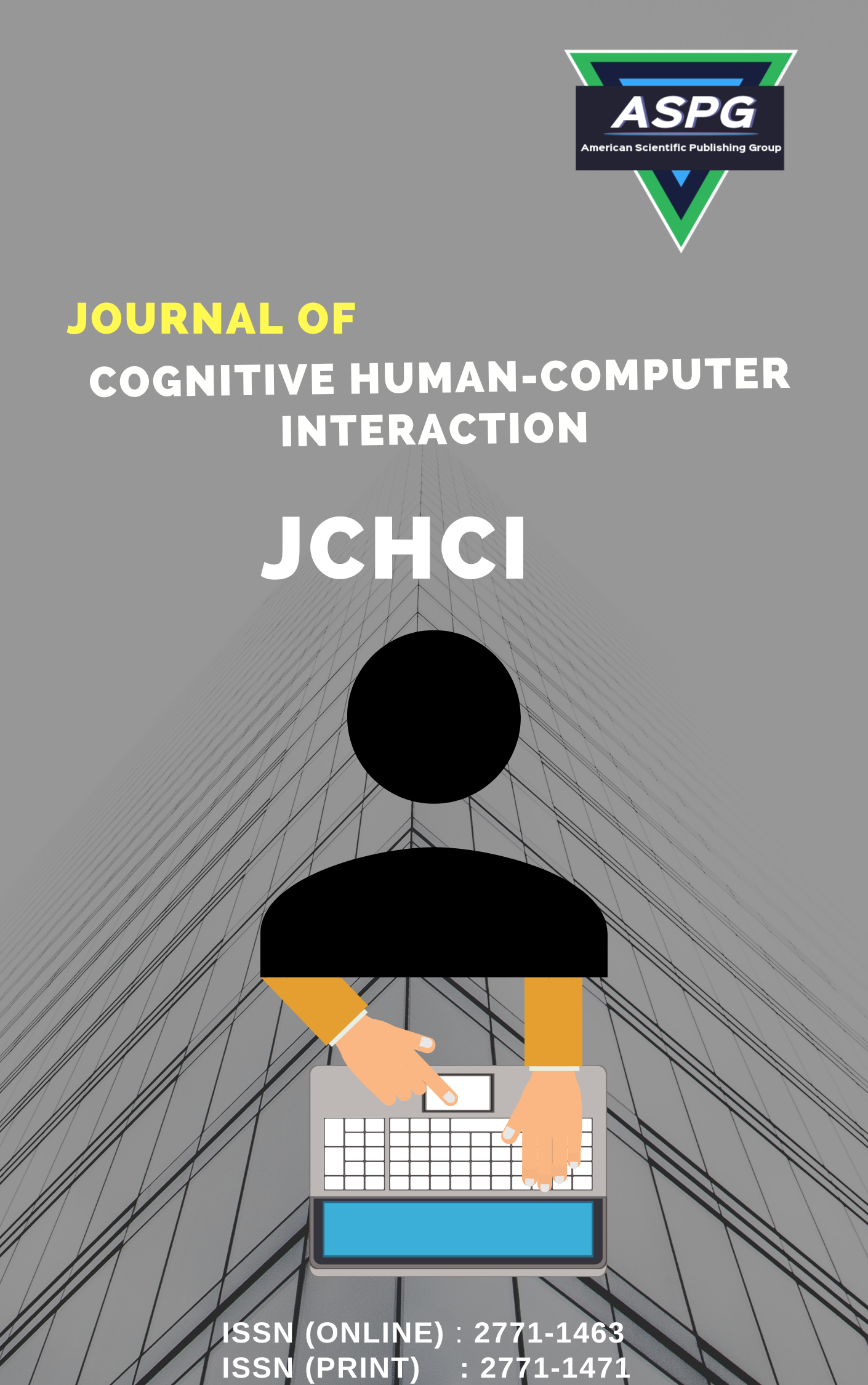

Volume 7 , Issue 2 , PP: 27-36, 2024 | Cite this article as | XML | Html | PDF | Full Length Article
Vinoth Kumar N. 1 * , Sundaram S. S. 2 , Sri Varshini S. 3 , Sivaprabha Sri P. L. 4
Doi: https://doi.org/10.54216/JCHCI.070203
Emission of carbon footprints plays a major role in climate change and hence, the world is moving towards sustainable energy-based solutions. This paper investigates challenges in classroom environments, focusing on illuminance levels, indoor air quality, and temperature. The study introduces methodologies to enhance educational spaces, emphasizing advanced lighting for optimal illumination, addressing indoor air quality and efficient temperature regulation. Thereby aiming to create visually conducive environments, promoting concentration, and learning effectiveness. The research contributes to nurturing students' intellectual growth and well-being through sustainability.
Indoor Air Quality , Lux Levels , Classroom environment , Humidity , Temperature , Energy Efficiency.
[1] N. Shukla and V. I. Singh, “AI – Based Smart Classroom Automation System,” 2018 International Conference on Smart Systems and Inventive Technology (ICSSIT), Tirunelveli, India, 2018, pp.1219-1224.
[2] Sung, W., & Hsiao S. J. (2021, July 13). Building an indoor air quality monitoring system based on the architecture of the Internet of Things. Eurasip Journal on Wireless Communications and Networking.
[3] K. Al Athwari and M. Ali, “Smart Classroom Energy Management System Using Wireless Sensor Networks,” 2014 International Conference on Future Internet of Things and Cloud (Fi Cloud), Barcelona, Spain, 2014, pp.121-127.
[4] Sonia Jenifer Rayen. "Survey On Smart Cane For Visually Impaired Using IOT." Journal of Cognitive Human-Computer Interaction, Vol. 1, No. 2, 2021 ,PP. 81 - 85.
[5] Gola M., Settimo G., Capolongo S. Indoor air in healing environments: Monitoring chemical pollution in inpatient rooms. Facilities. 2019; 37:600–623.
[6] S. Al- Khafajiy et al., “Smart Classrooms Management System: An Integrated Framework,” 2016 IEEE/ACM 9th International Conference on Utility and Cloud Computing (UCC), Shanghai, China, 2016, pp.152-157.
[7] Ajith Krishna R,Ankit Kumar,Vijay K. "An Automated Optimize Utilization of Water and Crop Monitoring in Agriculture Using IoT." Journal of Cognitive Human-Computer Interaction, Vol. 1, No. 1, 2021 ,PP. 37-45.
[8] Macieira, P., Gomes L., &Vale Z. (2021, December 7). Energy Management Model for HVAC Control Supported by Reinforcement Learning Energies.
[9] T. Zhu et al., “A Smart Classroom with Embedded Systems, “2018 IEEE 42nd Annual Computer Software and Applications Conference (COMPSAC), Tokyo, Japan, 2018, pp.885-888.
[10] M.Sumithra,B.Buvaneswari,S.Ahilesharan,T.Fenix Raja Singh,J. Harish. "Online Vehicle Rental System." Journal of Cognitive Human-Computer Interaction, Vol. 2, No. 1, 2022 ,PP. 34-39.
[11] S. Manigandaa,V. D. Ambeth Kumar,G. Ragunath,R. Venkatesan,N. Senthil Kumar, De-Noising and Segmentation of Medical Images using Neutrophilic Sets, Journal of Fusion: Practice and Applications, Vol. 11 , No. 2 , (2023) : 111-123 (Doi : https://doi.org/10.54216/FPA.110208)
[12] Dong J., Winstead, C., Nutaro J., & Kuruganti T. (2018, September 13). Occupancy - Based HVAC Control with Short – Term Occupancy Prediction Algorithms for Energy-Efficient Buildings Energies.
[13] T. S. Kumar et al., “IoT-Based Smart Classroom for Enhanced Learning Experience,” 2019 IEEE International Conference on Distributed Computing, VLSI, Electrical Circuits and Robotics (DISCOVER), Kottayam, India, 2019, pp.379-382.
[14] Karimi H., Adibhesami, M. A., Bazazzadeh H., & Movafagh S. (2023 April 25). Green Buildings: Human-Centered and Energy Efficiency Optimization Strategies Energies.
[15] B. K. Gupta et al., “AI and IoT for Smart Classroom Environment,” 2020 2nd International Conference on Data Engineering and Communication Technology (ICDECT), Chennai, India, 2020, pp.172-177.
[16] Choi S., Choi A., Sung M. Cloud-based lighting control systems: Fatigue analysis and recommended luminous environments Build Environ 2022;214:108947.
[17] D. Zhang et al., “Design and Implementation of Smart Classroom Management System,” 2017 IEEE 5th International Conference on Serious Games and Applications for Health (SeGAH), Perth, WA, 2017, pp.1-6.
[18] R. Venkatesan ,Althaaf Shaik ,Suraj Kumar,Vipul Guria ,Abhishek Raj. "Intelligent Smart Dustbin System using Internet of Things (IoT) for Health Care." Journal of Cognitive Human-Computer Interaction, Vol. 1, No. 2, 2021 ,PP. 73 - 80.
[19] Martirano L., Senior I. A Sample Case of an Advanced Lighting System in an Educational Building. In Proceedings of the 2014 14th International Conference on Environment and Electrical Engineering (EEEIC), Krakow, Poland, 10–12 May 2014; pp.4–9
[20] M. B. Bhattand , A. Sharma, “A Survey on Smart Classrooms: Models, Technologies, and Requirements,” 2019 International Conference on Machine Learning, Big Data, Cloud and Parallel Computing (COMITC on), Faridabad, India, 2019, pp.207-212.
[21] R. A. Khan and, H. S. Kim, “AI-Based Smart Classroom Management System,” 2015 International Conference on Information Networking (ICOIN), Cambodia, 2015, pp.197-199.
[22] Twardella, Dorothee & Matzen, W & Lahrz, T & Burghardt, R & Spegel, Hedwig & Hendrowarsito, L & Frenzel, Anne & Fromme, Hermann. (2012). Effect of classroom air quality on students’ concentration: Results of ac Luster-randomized cross-over experimental study. Indoor air. 22.378-87.